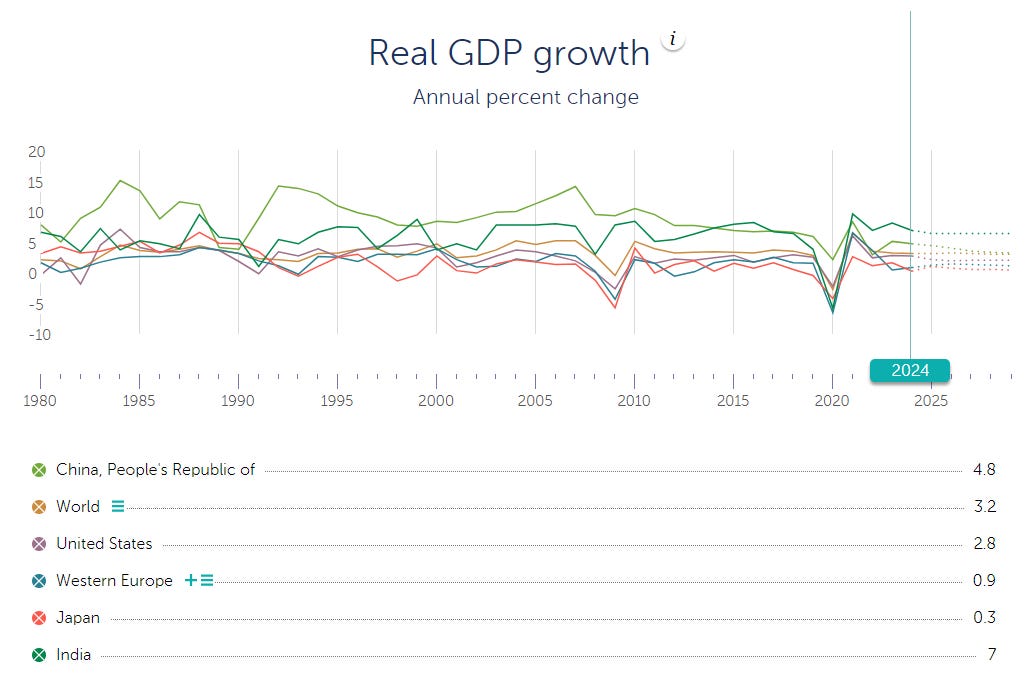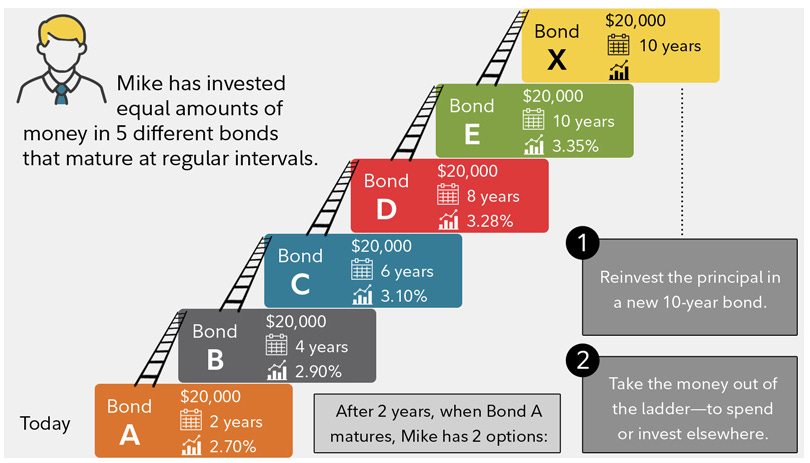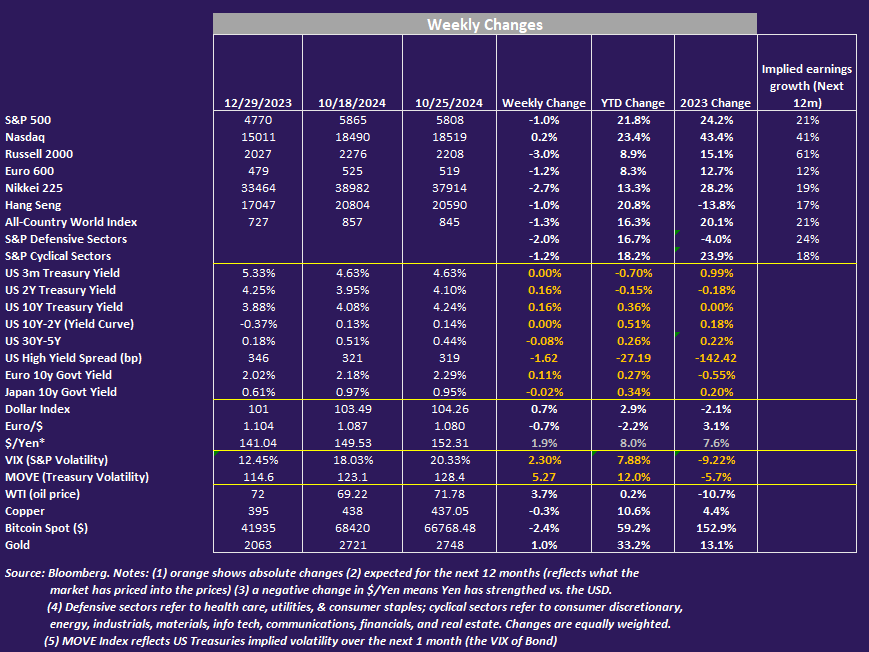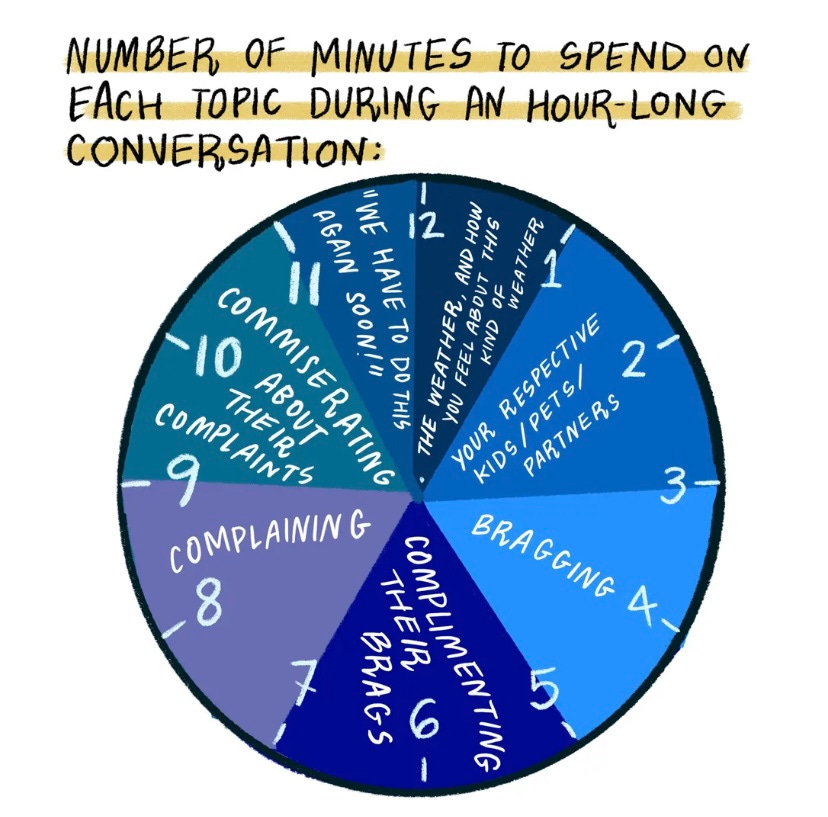Weekly Good Reads: 5-1-1
Fiscal Debt, Term Premium, S&P Next Decade Returns, IMF Growth Projections, Bond Ladder, Talking to People (Fun)
Welcome to a new issue of Weekly Good Reads 5-1-1 by Marianne, a 25-year investment practitioner writing about investing, economy, wellness, and something new I learned in AI/productivity.
In this Weekly, I share insightful/essential readings, charts, and one term, incorporating some of my market observations and weekly change tables. I look beyond data and share something enlightening about life, health, technology, and the world around us 🌍!
Sharing the quote of the week:
Keep true to the dreams of your youth.
~ Friedrich Von Schiller, German playwrite and poet
Weeklies archive | Investing | Ideas | Index of charts and terms
Conversations with Female Investors and more (to inspire more females into finance and investment careers 🙌.)
Market and Data Comments
This week’s macro/market news centred on three heavily discussed topics: (1) The path of the public debt to GDP ratio globally (2) The positive Treasury bond term premium, and (3) the expected next 10-year total returns of S&P 500 (Goldman).
Amid macro currents of interest rate cutting but fiscal expansion, the upcoming US election’s tightness of race (where marginal and not median voters are what count), and geopolitical tensions elsewhere, the S&P broke its 6-week winning streak and was down 1.0% (while Nasdaq was up 0.2% and Russell-2000 slumped 3.0%) with bond volatility jumping 6 points and the 2y and 10y US Treasuries yield climbing 16bp. Commodities especially gold (up 2%) did well while dollars also rose by 1%, likely reflecting market jitterness towards geopolitical risks.
At the recently concluded annual IMF/World Bank meetings, the IMF projected global economic growth to be at 3.2% in 2024 and 2025 (and 3.1% in 5 years)—underwhelming (see Econ/Invest. #1), pointing towards the need for medium-term structural reforms to promote growth. US GDP growth is 3x and 2x of Europe’s in 2024 and 2025.
More concerning is the path of the public debt, which is expected to exceed $100 trillion (93% of GDP) in 2024 and 100% by 2030, 10% higher than before the Pandemic in 2019 (see chart above). Realized debt/GDP ratios five years ahead can be 10% higher than projected on average. Hence more fiscal tightening is called for to contain debt risks, especially when monetary policy is easing to ease the pain.
While fixed income is back on the radar screen for investment portfolios, the term premium on 10-year Treasury bonds—the extra yield investors demand for owning the debt rather than rolling over shorter-term debt—has risen above zero and is moving towards the recent highest level in October 2023, based on the New York Fed model. This measure offers important information on how investors perceive future risks, be it inflation, supply, or others beyond the expected short-term rate path (see Econ/Invest. #2).
But the most read article this week on Bloomberg was none other than the Goldman Sachs stock strategy team's recent update of their projected S&P 500 returns—just 3% over the next decade, compared with 13% in the previous decade and a long-term average of 11%. They also see a 72% chance that the benchmark index will trail Treasury bonds and a one-third chance they will lag inflation. Their main argument is the starting valuation and the currently high stock market concentration (i.e. high levels of sales growth and profit margins are generally hard to sustain over long periods.)
While I agree that the stock market is not cheap, the analysts may have underestimated how US large tech can innovate at scale while earning high ROE and profits, with almost no threat from global competition, plus more IPOs are coming.
The most important event the world is watching is the US election and the “sweep” of the House and Senate, which will have significant implications on bond yields, taxes, tariffs, the dollar, and potentially the size of Chinese stimulus policy.
This coming week we will monitor the US Q3 preliminary GDP on Wednesday, September personal spending on Thursday, the non-farm payrolls, unemployment rate, and average hourly earnings on Friday, Euro Area preliminary Q3 GDP on Wednesday, October estimated inflation and September unemployment rate on Thursday, UK budget on Wednesday, Japan’s lower house election on Sunday and Bank of Japan’s rate decision on Thursday, China’s Q3 politburo meeting on Wednesday-Thursday, October NBS manufacturing PMI on Thursday, and October Caixin manufacturing PMI on Friday. Five of the seven “Magnificent 7” stocks will report earnings - Alphabet, Microsoft, Meta, Apple, and Amazon too.
Economy and Investments (Links):
Global Growth is Expected to Remain Stable Yet Underwhelming (IMF)
Surge in Treasury ‘Term Premium’ Warns of Rising Bond Risks (Bloomberg or via Archive)
Decade of Big S&P 500 Gains Is Over, Goldman Strategists Say (Bloomberg or via Archive)
+ What Two Big Global Trends Tell Us About the 2024 Election (Axios)
Vice President Kamala Harris is trying to retain the White House for the Democrats at a time when voters all over the world are throwing out their incumbents.
Why it matters: Harris could be swept out in the same tide of inflation-fueled economic angst that has doomed incumbents elsewhere. Or she could be saved by the relative buoyancy of the Biden-era U.S. economy — the envy of the world.
Finance/Wealth (Link):
Everything You Always Wanted to Know About Bonds (But Were Afraid to Ask) (FT Alphaville or via Archive)
You know you will have fun reading about bonds when you notice the author uses a Bonzo rates monkey to explain bond maths — how the time to maturity affects the bond price when yield changes.
As a reminder, when bond yield rises, bond price falls. Think of it like this: when interest rates rise, investors don’t want to buy existing bonds with a lower fixed interest rate so their prices will adjust (decline) until their yield matches that of new bond issues, which are issued at the current higher yield.
Wellness/Idea (Link):
Charts for Talking to People (The New Yorker)
I had fun reading this. Do you relate?
One Chart You Should Not Miss: IMF Real GDP Growth and GDP on PPP Basis Projections
Play around with the Datamapper and you can find the trend of real GDP growth or inflation of any country in the world. If you use the GDP based on purchasing power parity, you will see how the emerging countries already took over the developed countries in GDP size in 2009 while China’s GDP already exceeded that of the US in 2016.


One Term to Know: Bond Ladder

A bond ladder is a popular way to invest in fixed income and is made up of individual bonds (from government, agency, TIPS, munis to corporates) with maturities spread out at equal intervals. Each time a bond matures, you have the option to purchase longer-duration (and different credit) bonds at the prevailing rate (see the chart above).
Ladders provide predictable income streams and help manage risks against changes in interest rates.
One point to note: you will have to bear the ups and downs of bond value since you need to hold the bonds in your ladder until they mature to maximize the benefits of regular income and risk management. If you sell early, you will risk losing income and may also incur transaction costs. That also means you need to have enough money to spread across the various rungs of the bond ladder.
Fidelity has a tool to show you how to build your bond ladder.
[🌻] Things I Learn About AI/Productivity:
Introducing Computer Use, a new Claude 3.5 Sonnet, and Claude 3.5 Haiku — Anthropic has announced an upgraded Claude 3.5 Sonnet with improved performance (especially in coding), a new Claude 3.5 Haiku model matching Claude 3 Opus's capabilities, and a groundbreaking computer use feature in public beta that allows Claude to interact with computers like humans do through clicking, typing, and cursor movement.
One of the best use cases with LLMs for investment analysts is to dissect earnings calls to cite key growth catalysts and emerging trends of various companies. For example, I loaded up the latest investor presentations of similar companies within the same industry and asked Claude or Perplexity to extract the key revenue drivers and emerging industry trends in the next 1 year to medium term. These are done in minutes 🌼
Please do not hesitate to get in touch if you have any questions!
Please also check out my Conversations with female fund managers, wealth advisors, and more.
If you like this Weekly, please share it with your friends or subscribe to my newsletter🤝.










